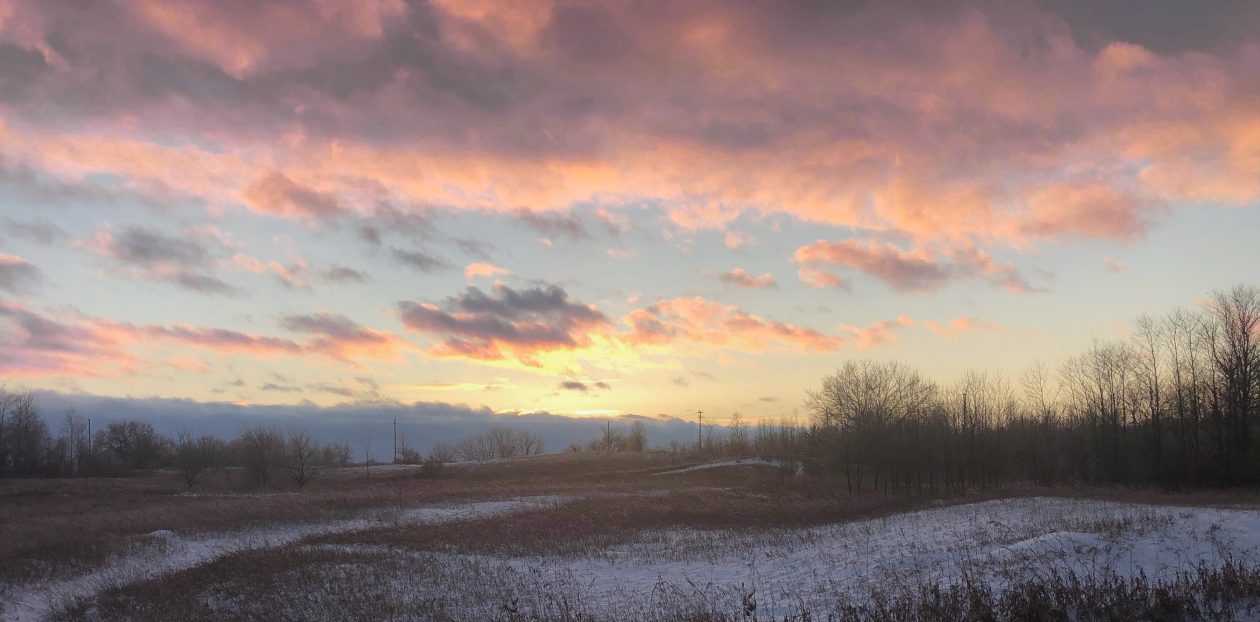Today I visited my mother for the first time in months.
She has been “living” in a long-term care residence for the last ten months and for almost all of that time, visiting has been verboten.
My mother has been in the throes of Alzheimer’s disease for a couple of years now, and before that, she was aware enough of her muddled mind to say to me, “Ailsa, you don’t want this.”
This photo shows her and my father at our last Christmas together in 2018. Dad, who was 100 years old, was hamming it up, as usual, but would be dead in 43 days. Mom had become increasingly less talkative but was still clearly enjoying the festivities, even though she couldn’t participate in much of the conversation.
Now she is confined to a wheelchair and only ever speaks one or two words: “Yes” or “Hello” or “I’m fine”. It is a good day when she smiles and laughs, and a better day when she shows some recognition of a name, a phrase or a picture.
===================================================
Today I drove a cat, an orange and white beauty, on one segment of its journey out of a kill shelter to a volunteer run cat rescue in Toronto. Several kind-hearted souls acted as a convoy to move this cat, as well as other discarded animals, to people who would care for them.
I named this cat Marmalade.
Had she not been removed today, she would have been destroyed. I’m glad I helped get her to safety.
==================================================
And today I read that Charlie the coyote had died. That might not mean much to you but it made me cry. You see, Charlie was a coyote who lived in Wyoming with his adoptive mother, Shreve Stockton. Shreve is the author of the blog Honey Rock Dawn (http://honeyrockdawn.com/) and The Daily Coyote (http://www.dailycoyote.net/) where she has chronicled not only Charlie’s 13 years of life alongside her but also the whole crew: dogs, cats, cows, bulls, bees, horses…the “farmily”. If you have followed the life of this remarkable wild animal, you will understand why his death is so incredibly sad and earth-shaking – animals that become iconic can never die. But if you live with a coyote in cattle country out west, it is likely things will end badly. Shreve would be the first to say that she likely feared this every. single, day. Miraculously, Charlie did not meet his end at the hands of a rancher or hunter; rather, in Shreve’s words, fate took him:
“The next morning, Charlie slept in. He went outside at 8:08 am. I know this because I checked the clock to give him ten minutes to come back inside before I went out to be with him. When I joined him, he was curled up on the sunny eastern-facing hillside, nestled under a big rabbit brush. I sat down near him, watched him and talked to him. And then, just before 9, he was gone, as light and quick as a dandelion seed lifting off on the breeze.”
When Charlie became a celebrity (check out her book The Daily Coyote and her new book, The Daily Coyote: Ten Years in Photographs – https://shop.dailycoyote.net/product/the-daily-coyote-ten-years-in-photographs), we saw not only what a talented photographer and writer Shreve is, but what an incredible being Charlie was. Charlie’s face was all over her Instagram feed, in calendars, in books and in every one of her followers’ psyches.
===================================================
Today I saw a silver white crow. I hear that they are rare. But it was perched on one of the maples behind the house, with a sidekick, all black. As it lifted and its’ wings unfolded, it was a shock of white.
Of course, this made me look up this phenomenon, especially what the meaning of seeing a white crow might be. And this is what I found:
“Signifies something exceptionally good or extremely bad is going to take place in the future due to your past deeds.”
Well, that made me laugh out loud.





























































